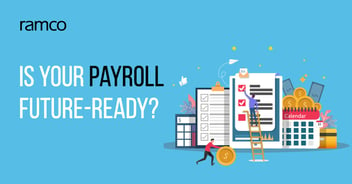
- Home
- Artificial Intelligence Global Payroll
- Demystifying Millennials in the Workplace
Demystifying Millennials in the Workplace
Published :

To understand Millennials in the workplace, we have to begin with what organizations have done exceptionally well - run large workforces, provide formal infrastructure, and compensate their employees with steady paychecks. These rules of engagement worked well for the Baby Boomers, but defy the core characteristics of Millennials in today’s workforce.
Statistics on millennials in the workforce are pretty straightforward- there is a marked increase in the number of millennials joining the workforce in the past decade. Here’s a data point which puts this in perspective- by 2020, one out of three adults in America will be a millennial (that’s millennials forming 33 percent of the workforce).
This report by the Governance Studies at Brookings, “How Millennials Could Upend Wall Street and Corporate America”, also states that by 2025, 75 percent of the American workforce will comprise of millennials.
A recent study by Greyhound Research (a leading global analyst firm) reaffirms these findings about working with millennials. It finds that millennials do not prioritize aspects such as formal infrastructure in their top 3 reasons for working with a company. The study also confirms that millennials at work are driven by an organization’s purpose and their own alignment with that purpose, rather than the lure of a stable paycheck.To manage millennials in the workplace, then, organizations need to cross the chasm between a paycheck and purpose. This is precisely where organizations today are struggling the most.
Just as millennials in the workforce continue to rise steadily, so does the ‘Perception’ about them. Here is a quick compilation and my observations:
While most of us are quick to judge this hyper-connected, tech-savvy generation, I believe that millennials function best with and around technology. They inherently leverage tools and technology for everything - from planning to execution, from collaboration to calibration, from learning to doing. Hence, understanding and engaging millennials requires organizations (and their leaders) to adopt a technology-first approach and embed technologies like Artificial Intelligence (AI) & Machine Learning (ML) to create exceptional experiences.
Here’s how organizations can use this connection between millennials and technology to their advantage:
As discussed above, millennials in the workplace are guided by purpose, and not paychecks. Often, organizations wrongly interpret this need for purpose as millennials wanting everything done their way and hence being rigid. However, this couldn’t be further from the truth. Millennials are modern citizens who require modern workplaces with flexibility in working locations, hours and employment types. In essence, every millennial wants to be seen as an independent entity and have a career path that is customized to suit their purpose.
Here’s a list of how organizations can cater to this need of customization and personalized experiences:
In today’s world, just as organizations cannot wait for weeks and months for critical feedback, so can’t employees, especially millennials who derive meaning from their work. They expect continued coaching and feedback from their leaders to keep them engaged with ongoing check-ins regarding their performance.
Here’s a list of how organizations can better integrate millennials in the workforce:
With the increase in number of millennials in the workforce, organizations (and their leaders) need to consider implications in the way work is performed. We also need to rethink and refresh our talent management strategies and HR practices to support this growing set of millennial human capital.
As organizations and their leaders, we need to redefine the experience millennials have in the workplace.
I firmly believe that the first step toward achieving this is to truly understand the millennials and make a change in mindset – ours (paycheck) to theirs (purpose).

All Rights Reserved. © Copyright 2023. Ramco Systems.